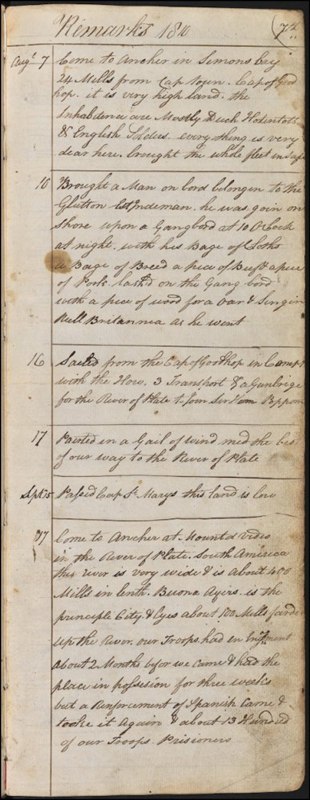Experts from Dundee University’s Book and Paper Conservation Studio have painstakingly restored the logbook from a celebrated warship from the era of the Napoleonic Wars.
The log, recorded aboard the HMS Medusa a ship on which Nelson once sailed dates from March 23, 1802, and was written by sailor Andrew Service.
Service’s time on the Medusa included stops at the Falklands, Mediterranean, and Indian Ocean and he wrote about sea and land battles, encounters with local inhabitants and other ships, and life on board.
The past two centuries had taken its toll on his logbook, which is held by Glasgow University’s Archives Services. The parchment cover and paper pages were coated with dirt, and the binding was damaged.
Conservator Emma Fraser said, “We looked at the fact the book was in its original binding and how to maintain as much of that original material as possible during the conservation work.
“In that respect, we were very successful. It was actually a well made book to start with, which helped as there was a lot of material left intact. This is perhaps surprising when you consider it was kept on a boat, and therefore the potential for damage from water and other contaminants.
“Initially, we engaged in cleaning to remove surface dirt. One problem we encountered is that there were pages missing. That is not unusual for a book of this age as blank pages were often removed to be used elsewhere.
“We had to add new pages to build up the book to its original size and prevent further damage to the spine. The original cover is parchment, which tends to shrink. We then humidified and flattened it so that it returned to its previous shape.
“From the point of view of us, as conservators, what was interesting was the fact the logbook was still in its original binding. As it was not a re-bind, it also allowed us to learn more about how books were made in those times, and study the process for future restorations. For historians, the book reveals a lot about the time, and is a fascinating, first-person account of well known and vital incidents in the Napoleonic Wars.”
The gun frigate Medusa was launched in 1801, when a French invasion was believed to be imminent. Admiral Nelson sailed on her in August 1801.
Service’s logbook begins on March 23rd, 1802, after Nelson had left the ship.
Originally from Port Glasgow, Service joined the Medusa in 1801 at the age of 20.
All photos courtesy of Glasgow University Archive Services, ref. UGC182.
